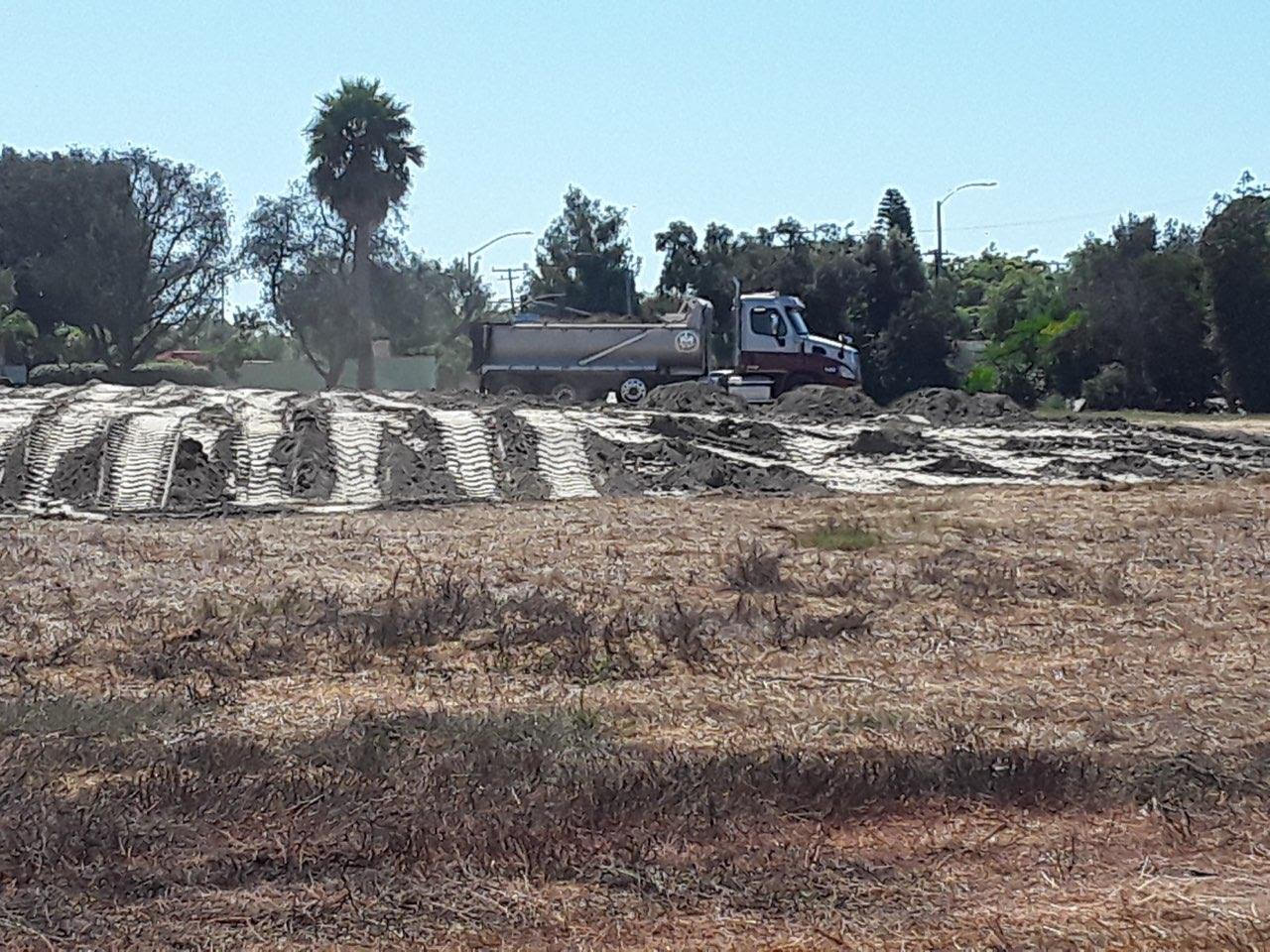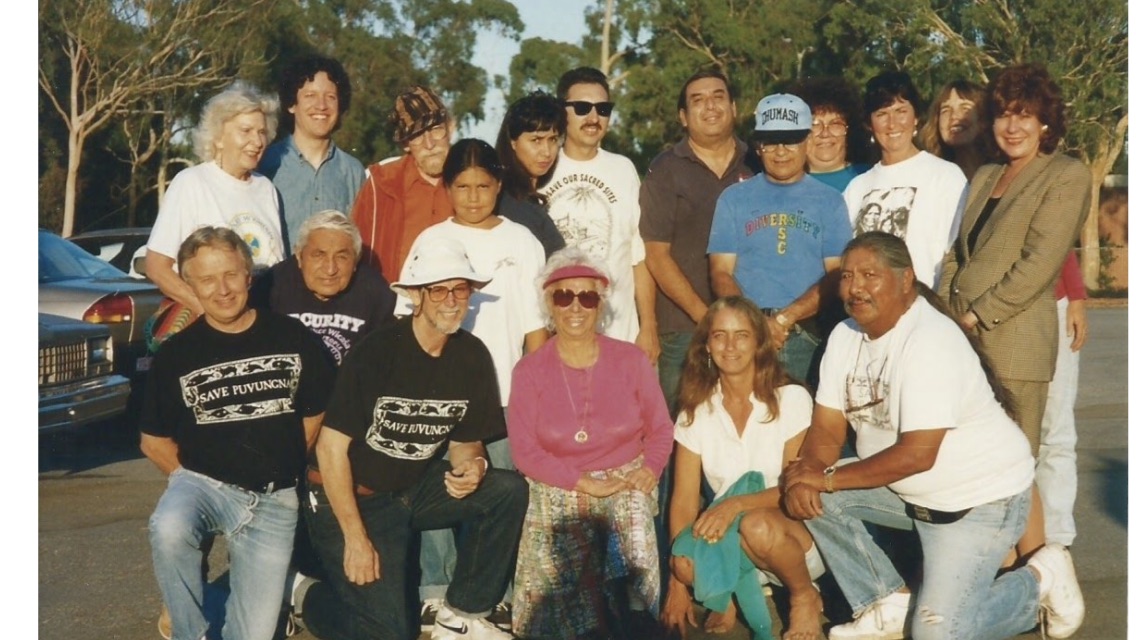At California State University, Long Beach (CSULB) people from the Tongva Nation, Acjachemen Nation, and other supporters are fighting for the over 2,000-year-old sacred land Puvungna. Puvungna used to be more than the current 20 acres, but the university was built on top of the land. This land originally belonged to the Tongva nation but has also been a home and a gathering place for prayers and ceremonies such as Pow Wows for many local Natives, Indigenous people, and others that come to learn about the culture. However, many Natives, Indigenous people, and supporters fear losing the land to future construction projects by CSULB.
The university began to move piles of dirt filled with debris and other trash from their previous construction projects onto the sacred land back on Sept. 27, 2019, which also fell on the 52nd annual Native American Day in California; this sparked outrage within the community. Native Americans, Ingenious people, and activists immediately began protesting and began to spread awareness of the incident via social media. Almost two years after the incident, the Daily 49er, the campus’ newspaper, now reports that the university is being sued for its actions by members of the Juaneno Band of Mission Indians, Acjachemen Nation-Belareds and California Cultural Resources Preservation Alliance, Inc.
This lawsuit was originally filed back in October of 2019 but is still ongoing due to delays caused by the COVID-19 pandemic. According to a press release from March 15, 2021, authored by a representative from the groups who are suing the school, the Juaneno Band of Mission Indians, Acjachemen Nation-Belareds and California Cultural Resources Preservation Alliance, Inc. are suing CSULB for violating the California Environmental Quality Act (CEQA). According to the release, the university dumped “6,400 cubic yards of construction dirt and debris on a listed historic and sacred Native American site without conducting an environmental review of the potential impacts.”

Assistant professor in American Indian studies at CSULB and descendent of the Iipay Nation of Santa Ysabel Dr. Theresa Gregor explains how the situation between the university and Indigenous first started.
“When the dumping occurred in 2019, it was a mistake by a subcontractor who was not informed about the protocol in the way he should have been. It was a miscommunication within the process that had already been established,” she explained.
On Jan. 13, 2021, CSULB released a video addressing the situation on their YouTube channel titled, “A Message about Puvungna.” In this video, CSULB President Jane Close Conoley addressed the community about the dumpings.
“At the time, keeping soil from campus here on site was the preferable method of managing excavated earth based on counsel we received from our campus committee on Native American Burial Remains and Cultural Patrimony,” she stated.
Despite this statement, Michelle Castillo, from the Acjachemen Nation who cares for the land explained that this is not the first time the university has done something like this.
According to Castillo and the About Puvungna page from CSULB, in 1993 CSULB attempted to build a strip mall on the sacred land. Native Americans, Indigenous people, and activists protested against the university’s plans and a lawsuit was filed against the school. Eventually, the university’s plans were blocked by the Puvungna Sacred Site Struggle.
Castillo explained that she, alongside other Indigenous people and supporters, has now been protesting for the protection of Puvungna for nearly two years. She is part of an Indigenous-led community group known as Friends of Puvungna. They are active on social media and share details of virtual gatherings, ceremonies and fundraisers. Castillo, along with others that care for Puvungna, claims that the school had dumped dirt on the land four different times.

“It is damaging to Puvungna. It is damaging to the community. It is damaging to the tribes,” Castillo said.
Tongva descendent and CSULB alumni Summer Wilson shares common ground with Castillo when discussing how hurtful the situation is to Indigenous and other local communities. She highlighted the fact that the word “Puvungna” means “gathering place” and argues that the land is not only important for Indigenous people, but for all that want to learn about the culture itself.
Like many people protesting against the actions of CSULB, she is demanding the school take accountability for their actions. “I want President Conoley and those under her that have enforced this to give an apology. I want the president to admit that she lied and that it was not a mistake,” Wilson said.
The Daily 49er reported on March 16, 2021, that the university did have plans on building a parking lot on Puvungna back in 2019. Images of emails and mapped-out blueprints displaying the plans of the parking lot structure have been released by the university, which will be exhibited in the ongoing lawsuit. President Conoley had previously denied the plan of turning Puvungna into a parking lot in the YouTube video released back in January and claimed in the same video that they were “rumors.”
Afro-Indigenous and descendant of the Acjachemen tribe In’yoni Felix is frustrated by this and has been actively working to spread information, mainly via TikTok, about Puvungna and the action of CSULB dumping dirt on the historic land. She has also helped organize a peaceful protest at Puvungna to send a message to the university.

Felix believes that the action of the school dumping the soil on Puvungna was disrespectful to the Native Americans and the Indigenous community. “It has really shown us that the university does not care about its Indigenous people and does not value what we say nor value our traditions,” said Felix, “We were actively using the site when they dumped the soil and then lied about it.”
Acjachemen tribe member Rebecca Robles describes how appalled their community was when CSULB used trucks to deposit 6,400 cubic yards of soil on the land. Robles explains that they have recently sent a letter to California Governor Gavin Newsom asking for support and to preserve Puvungna.
In the press release from a representative from the groups who are suing CSULB, Robles states that “Dumping construction dirt and debris on this land is fundamentally disrespectful and, what’s more, it is a continuation of the cultural genocide that has been practiced on the Indigenous people of Southern California for centuries.”
Robles goes on to highlight the importance of Puvungna by sharing the fact that ancestor remains were found there, and that the university was built over most of Puvungna and is now left to less than 22 acres. She and others are calling for the university to remove the dirt, remove the trash, and protect Puvungna into perpetuity.
“We are calling on Governor Gavin Newsom, we are calling on Chancellor Joseph Castro, and we are calling on people to support us in fighting for justice.”

